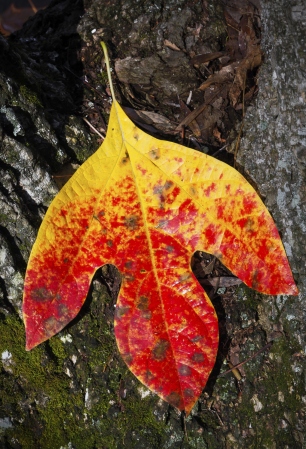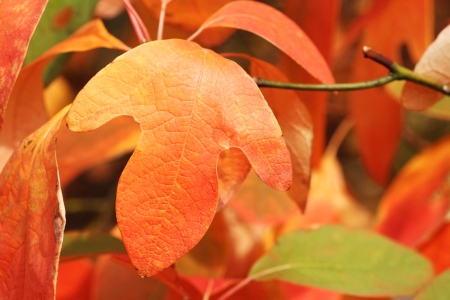 In need of a tonic? Sassafras comes to mind and figures prominently in my colonial American historical romances set in the Alleghenies among the Native Americans. Think the colonial frontier–The Last of the Mohicans–and you’re there.
In need of a tonic? Sassafras comes to mind and figures prominently in my colonial American historical romances set in the Alleghenies among the Native Americans. Think the colonial frontier–The Last of the Mohicans–and you’re there.
Back to sassafras. I love the tree’s varied mitten shaped leaves and its distinctive, aromatic scent. My parents have a sassafras tree growing in their yard, but I’d have to head into the mountains to get my fix, or buy sassafras from the small local grocery store.
*Note to self, plant sassafras trees. Maybe if I put in an entire grove some would survive. Our challenge is the cows which occupy much of our land and eat anything not protected behind secure fencing. Saplings are among their favorite delicacies.
You might be interested to learn, as was I, that Christopher Columbus is said to have quelled mutinous seamen by the sudden sweet smell of sassafras which indicated the nearness of land. Not only did it aid in the discovery of the New World, but was an important export to Europe in the early days of colonial American, even exceeding shipments of tobacco.
Wine made from the darkly blue berries has been imbibed for colds. During the spring-flowering period, the blossoms were simmered to make a tea for reducing fevers. A blood purifying spring tonic was and still is imbibed from a tea made by brewing the roots. A tea distilled from the bark was believed to aid in the treatment of bronchitis, respiratory ailments and tummy upset. Chewing the bark was thought to help break the tobacco habit, a problem even in the early days of this country. The roots were distilled and the oil from them used to flavor many products including ginger ale, sarsaparilla, cream soda, root beer, toothpaste…
A poultice made from the leaves and laid on wounds was used to stop bleeding and aid in healing. Native Americans steeped in the many uses of sassafras passed their knowledge along to European settlers in the colonial frontier. A tea from the bark was also thought to be beneficial in the treatment of venereal disease, needed by both Indians and colonists alike. If you wonder what ailments afflicted folk in the early days of this country, you need only read what they were most interested in finding treatments for and cancer doesn’t make the top ten.
 How to make sassafras tea: One method is to vigorously scrub several roots, a couple of inches long, and use the whole root, or cut them in into pieces, and bring to a boil in three pints of water. Reduce heat and simmer for fifteen minutes. Remove from heat, cover, and steep for another ten minutes before straining and serving. Yet another method is to drop several roots into a quart of boiling water, remove from heat and steep then serve. A pound of roots will make 4 quarts of tea and can be used several times before they lose their strength.
How to make sassafras tea: One method is to vigorously scrub several roots, a couple of inches long, and use the whole root, or cut them in into pieces, and bring to a boil in three pints of water. Reduce heat and simmer for fifteen minutes. Remove from heat, cover, and steep for another ten minutes before straining and serving. Yet another method is to drop several roots into a quart of boiling water, remove from heat and steep then serve. A pound of roots will make 4 quarts of tea and can be used several times before they lose their strength.
For the bark, especially used as a spring tonic, cut or grind a teaspoon of bark and steep in a cup of boiling water for ten minutes, strain and sip. The tea from either root or bark should have a yellowish red hue, rich smell and pleasing taste. It can be thinned with milk or cream and sweetened. I would add some honey, but those of you who like it plain, enjoy.
And good health to us all.


No comments:
Post a Comment